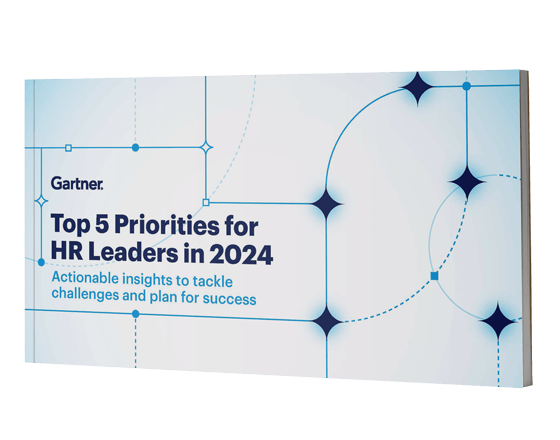Diversity and inclusion best practices
You would be hard pressed today to find a business that is not focusing on diversity and inclusion best practices.
Now very much the hot topic in corporate circles, it is becoming clear that diverse companies making room for true equality perform better, being 35% more likely to see above average financial returns than their opposite counterparts.
The importance of diversity and inclusion
Whilst many companies find change difficult to deal with, in many cases this is due to the fact that staff don’t like uncertainty and employers don’t want to lose control or fear it will take up too much time.
But they know that change is needed and this includes making room for diversity and inclusion.
But seeing this change as a threat is wrong; leaders have to overcome these negative feelings if companies are to thrive and survive.
In the future, those organisations who fail to diversify are at the risk of being rendered obsolete.
Diversity and inclusion best practice
In order to achieve this valuable competitive advantage, it is essential for the company to work in line with best practices for workplace diversity and inclusion.
Diversity
We can define diversity in the workplace as understanding, accepting, and valuing differences that people bring to the company, regardless of race, gender, age, religion, sexual orientation or any other variation such as education, personality and experiences.
It is also interesting to see that different age groups see diversity in a different way:
- Millennials – taking advantage of different experiences, backgrounds and perspectives to create innovation.
- Gen X and Boomers – equal representation, no matter the demographics involved and without linking diversity to business results.
They expect diversity and inclusion to be treated seriously.
Inclusion
We can define inclusion in the workplace as the production of a collaborative, supportive, and respectful environment, boosting the involvement and input of each person.
Putting diversity and inclusion together
We can define diversity and inclusion as a goal that the company works towards in order to support a diverse workplace, promoting the use of diversity to form a competitive advantage.
A recent Forbes Insight survey of 300 senior executives showed that their companies’ diversity and inclusion priorities focused on:
- Recruitment of diverse employees – 65%
- Retention of diverse talent – 44%
- Guaranteeing diversity in their workplace – 35%
65% of those surveyed felt that HR should be responsible for taking care of diversity and inclusion with 45% putting the onus on company leaders.
In addition, 50% felt that innovation was the production of diversity.
Diversity and inclusion best practice key features
As a business looking to promote diversity and inclusion, your company best practices need to take account of the following:
- Employees being treated fairly
- Providing a level approach to opportunities
- Good use of collaboration and teamwork
- Focus on creativity and innovation
- Being an organisation that is agile, responsive and flexible
- Attracting employees with diverse talents
- Making use of collaborative conflict resolution processes
- Appointing leaders that are passionate about diversity across all levels
- Use of the necessary diversity education and training
Strategies will need to be put in place to retain this framework of diversity and inclusion such as ensuring a focus from CHRO level, putting in place a senior executive to lead the agenda, adhering to and monitoring behavioural standards and training staff with regard to diversity and inclusion processes.
This should be seen as much more than just an HR initiative and more a top-to-bottom business approach.
Diversity and inclusion metrics
The same Forbes Insights survey revealed that 60% of companies have in place metrics to measure the success of their diversity and inclusion practices.
Metrics to be measured would include such things as employee productivity, morale and turnover.
Leaders in charge of diversity and inclusion strategies would have their performance monitored via individual and department reviews as well as making use of initiatives such as bonuses and salary increases.
Applying diversity and inclusion best practice
By taking account of the appropriate key diversity and inclusion best practices, your business should not only grow and flourish but you will find some of the more varied talent being attracted to a company that is seen to be embracing diversity.
It is also worth noting that the Forbes Insight Survey showed that as many as 50% of diversity and inclusion best practices are not tied directly into diversity but are more akin to those practices desired by employees, such as organisational flexibility and fair treatment.
As far as priorities go with regard to diversity and inclusion, then some of the focus should be on establishing a diversity recruitment strategy; it’s a good idea to look at ways of attracting more of these types of applicants and then providing them with ways of attaining leadership positions within your company.
Minorities within the organisation should also be empowered so that they have more influence when collaborating as teams. Long-term, all of this combined will have a powerful impact upon the company’s future.
Become a game-changing employer
For those companies looking to support diversity and inclusion best practices, then a suitable mission and key strategies should be put in place to enable them to achieve real competitive business advantages.
It is also important to focus on the impact that will be made as well as the equity that will be produced.
Those who are not afraid to move forward in this way will see a direct connection between improved performance and an engaged, empowered workforce. By tapping into something called The GC Index®, they will be able to ensure that:
- People enjoy their role, becoming far more productive
- The more effective teams are able to leverage the impact of each team member
- Organisational harmony appears as the result of enhanced collaboration
- People feel valued for their unique personal impact
- Diversity is increased by eliminating “unconscious bias”
- There is a much greater awareness of the impact made by each person
The GC Index enable you to build on these aspects of your business, attracting and retaining the best possible talent. By doing this, you can be branded “A GC People Company”, making the most of this competitive advantage.
Your Diversity & Inclusion Policy will then be one of:
“Recruiting people based upon the impact they can make to the organisation, valuing people for the impact they do make to the organisation and developing them for the potential impact they can make to the organisation.”
The GC Index works with businesses to help ensure that they work in line with diversity & inclusion best practices. Check out their Diversity and Inclusion Programmes here.



